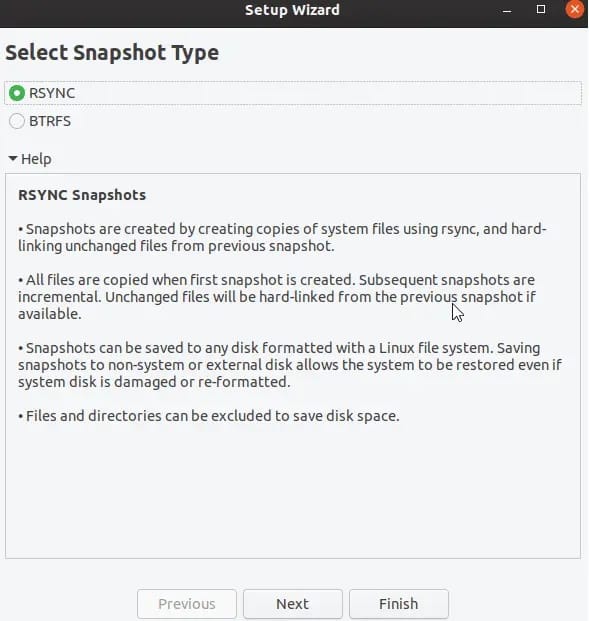How To Install Timeshift on AlmaLinux 9

In the world of Linux system administration, maintaining regular backups is crucial for ensuring data integrity and system stability. Timeshift, a powerful and user-friendly backup solution, has gained popularity among Linux users for its ability to create system snapshots effortlessly. This article will guide you through the process of installing Timeshift on AlmaLinux 9, a robust enterprise-grade Linux distribution. By following this guide, you’ll be able to safeguard your AlmaLinux 9 system against potential data loss or system failures.
What is Timeshift?
Timeshift is an open-source backup utility designed specifically for Linux systems. It creates incremental snapshots of your system at specified intervals, allowing you to restore your system to a previous state in case of any issues. Unlike traditional backup solutions that focus on personal data, Timeshift primarily backs up system files and settings.
Key features of Timeshift include:
- Incremental backups to save storage space
- Support for both RSYNC and BTRFS snapshot methods
- Ability to create bootable snapshots
- Exclusion of user data to focus on system files
- Easy-to-use graphical interface and command-line options
Compared to other backup solutions like Back in Time or Déjà Dup, Timeshift stands out for its focus on system files and its ability to create bootable snapshots, making it an excellent choice for system administrators and power users.
Prerequisites for Installing Timeshift on AlmaLinux 9
Before proceeding with the installation of Timeshift on AlmaLinux 9, ensure that you have the following prerequisites in place:
- A system running AlmaLinux 9 with at least 20GB of free disk space
- Root access or sudo privileges on your AlmaLinux 9 system
- An active internet connection for downloading packages
- Basic familiarity with the Linux command line interface
It’s also recommended to have your system packages up to date to avoid any potential conflicts during the installation process.
Preparing AlmaLinux 9 for Timeshift Installation
Before installing Timeshift, it’s essential to prepare your AlmaLinux 9 system by updating existing packages and installing necessary dependencies. Follow these steps to get your system ready:
1. Update Your System
Open a terminal and run the following command to update your system packages:
sudo dnf update -y2. Install Required Dependencies
Timeshift requires certain dependencies to function correctly. Install them using the following command:
sudo dnf install -y rsync git3. Configure EPEL Repository
Timeshift is not available in the default AlmaLinux 9 repositories. You’ll need to enable the EPEL (Extra Packages for Enterprise Linux) repository. Install it using this command:
sudo dnf install -y epel-releaseAfter installing EPEL, update your package list again:
sudo dnf update -yInstalling Timeshift on AlmaLinux 9
Now that your system is prepared, you can proceed with the installation of Timeshift. Follow these steps to install Timeshift on AlmaLinux 9:
1. Install Timeshift from EPEL Repository
With the EPEL repository enabled, you can now install Timeshift using the dnf package manager:
sudo dnf install -y timeshift2. Verify the Installation
After the installation is complete, verify that Timeshift was installed correctly by checking its version:
timeshift --versionThis command should display the version number of Timeshift installed on your system.
3. Launch Timeshift
You can launch Timeshift either through the command line or the graphical user interface. To start Timeshift from the terminal, use:
sudo timeshift-gtkAlternatively, you can find Timeshift in your application menu and launch it from there.

Configuring Timeshift
After successfully installing Timeshift, the next step is to configure it for your AlmaLinux 9 system. Follow these steps to set up Timeshift:
1. Initial Setup
When you launch Timeshift for the first time, it will prompt you to go through the setup wizard. Click “Next” to begin the configuration process.
2. Choose Backup Type
Timeshift offers two backup methods:
- RSYNC: This method is suitable for most users and works with all filesystems. It creates snapshots that can be browsed with a file manager.
- BTRFS: This method is faster and more efficient but requires your system to use the BTRFS filesystem.
For most AlmaLinux 9 users, the RSYNC method is recommended. Select your preferred method and click “Next”.
3. Select Backup Location
Choose a location to store your Timeshift backups. It’s recommended to use a separate partition or an external drive with sufficient space. Select your desired location and click “Next”.
4. Set Backup Schedule
Timeshift allows you to schedule automatic backups. You can choose from the following options:
- Monthly
- Weekly
- Daily
- Hourly
- Boot
Select your preferred schedule and specify how many backups you want to keep. Click “Next” to continue.
5. Select User Home Directories
By default, Timeshift excludes user data from backups. If you want to include specific user home directories in your backups, select them in this step. Click “Next” to proceed.
6. Finish Setup
Review your settings and click “Finish” to complete the Timeshift configuration.
Creating Your First Backup with Timeshift
Now that Timeshift is configured, you can create your first backup. Here’s how to do it:
1. Manual Backup
To create a manual backup:
- Launch Timeshift
- Click on the “Create” button in the main window
- Enter a description for your snapshot (optional)
- Click “Create” to start the backup process
2. Automated Backup
If you’ve set up a backup schedule, Timeshift will automatically create backups according to your settings. You don’t need to take any additional action for automated backups.
3. Verify Backup Completion
After creating a backup, you can verify its completion by checking the Timeshift main window. The new snapshot should appear in the list of available backups.
Restoring from a Timeshift Backup
In case you need to restore your AlmaLinux 9 system from a Timeshift backup, follow these steps:
1. Access the Restore Interface
Launch Timeshift and click on the “Restore” button in the main window.
2. Select a Restore Point
Choose the snapshot you want to restore from the list of available backups.
3. Perform the Restoration
Click on the “Restore” button and confirm your action. Timeshift will begin the restoration process.
4. Post-Restoration Checks
After the restoration is complete, reboot your system. Once rebooted, verify that your system is functioning correctly and all your data is intact.
Best Practices for Using Timeshift on AlmaLinux 9
To get the most out of Timeshift on your AlmaLinux 9 system, consider these best practices:
- Regular Backups: Set up a consistent backup schedule to ensure you always have recent snapshots available.
- Backup Storage: Store your backups on a separate partition or external drive to protect against primary drive failures.
- Test Restores: Periodically test the restore process to ensure your backups are working correctly.
- Update Before Major Changes: Create a new backup before performing system updates or major software installations.
- Monitor Disk Space: Regularly check your backup storage to ensure you have enough space for new snapshots.
Troubleshooting Common Timeshift Issues on AlmaLinux 9
While Timeshift is generally reliable, you may encounter some issues. Here are solutions to common problems:
Installation Errors
If you encounter errors during installation, try the following:
- Ensure your system is up to date:
sudo dnf update -y - Check if EPEL repository is properly configured:
sudo dnf repolist | grep epel - Clear DNF cache and try again:
sudo dnf clean all && sudo dnf install -y timeshift
Backup Failures
If backups are failing, consider these solutions:
- Check available disk space on your backup location
- Ensure you have the necessary permissions for the backup location
- Try creating a backup with sudo:
sudo timeshift --create
Restoration Problems
If you’re having trouble restoring from a backup:
- Verify the integrity of your backup files
- Try restoring from a live USB environment
- Check system logs for any error messages:
sudo journalctl -xe
Congratulations! You have successfully installed Timeshift. Thanks for using this tutorial for installing the Timeshift on the AlmaLinux 9 system. For additional help or useful information, we recommend you check the official Timeshift website.